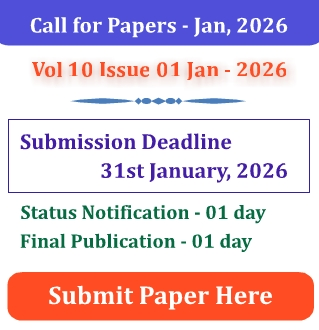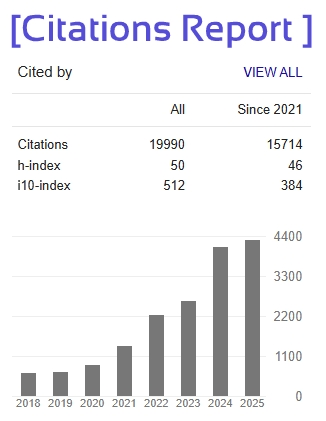Guidelines
Scientific analysis should begin with an outlined research question, which ends during a handy analysis protocol that plans the general approach. This foundation ought to cause a group of knowledge from that the manuscript may be made.
Manuscripts submitted to journals for thought for publication generally have the subsequent elements. therefore, the text itself ought to support the endeavor to convey the scientific data, rather than acting to further obscure the concepts and results.
Title Page:
A title page should be included. State the title of the manuscript, which should be short and simple, as well as authors and author affiliations. Indicate the journal to that the manuscript is being submitted. Provide approximately 5 key words, as well as a short title (sometimes referred to as a running title) for the manuscript. Finally, provide complete contact information for the corresponding author.
Abstract:
The abstract is typically a single paragraph.The abstract ought to be thought of as Associate in Nursing freelance document, so that the abstract does not rely upon any material in the body of the report and, similarly, the body of the report doesn’t depend on any material within the abstract.The first sentence ought to clearly state the target of the experiment.If the experiment relies upon a hypothesis, which is greatly preferred, the hypothesis should be stated and followed with statements describing its basis and evaluation.The subsequent sentences describe however the investigation was dispensed.The following sentences describe, with as much precision as possible without being verbose, the results of the experiment. The final sentences describe the importance of the results and therefore the impact of this work on the final field of study.
Introduction:
The introduction needs a brief review of the literature touching on the analysis topic. The introduction is then best constructed as a descriptive funnel, starting with broad topics and slowly focusing on the work at hand. Perhaps three to four paragraphs are needed. One approach is also to start out with one or 2 paragraphs that introduce the reader to the final field of study. The subsequent paragraphs then describe however a side of this field can be improved. The final paragraph is critical. It clearly states, most likely in the first sentence of the paragraph, what experimental question will be answered by the present study. The hypothesis is then stated. Next, in brief describe the approach that was taken to check the hypothesis. Finally, a outline sentence is also additional stating however the solution of your question can contribute to the general field of study.
Methods:
This section should be a straightforward description of the methods used in your study. Each technique ought to be delineated during a separate section. Begin, in a single section, with a statement of the materials used in the study, indicating the vendor and vendor contact information for each material. This data is crucial in order that readers have the aptitude to repeat the add their own establishments. NeXT describe, in separate sections, each key procedure and technique used in the study. Keep explanations brief and concise. If a selected experimental style is employed, describe this style within the second section of the ways, after the materials section. Similarly, if a theoretical or modeling element is employed, it ought to even be incorporated within the initial portion of the ways.
Finally, remember to describe the statistical analysis methods that were utilized to analyze the results, most likely in the final section of the Methods section. Although it is typically not recommended, the use of the passive voice is probably appropriate in the Methods section.
Results:
The Results section presents the experimental information to the reader and is not a place for discussion or interpretation of the data. The data itself ought to be given in tables and figures (see below).
Introduce every cluster of tables and figures during a separate paragraph wherever the general trends and information points of explicit interest square measure noted. You may need to point the position of a selected table or figure within the text.
For experimental studies, key statistics such as the number of samples (n), the index of dispersion (SD, SEM), and the index of central tendency (mean, median or mode) must be stated. Include any applied math analysis that was performed, and make sure to indicate specific statistical data, such as p-values.
Note that every table and figure within the paper should be said within the Results section.
Discussion:
The discussion section, often the most difficult to write, should be relatively easy if the previous suggestions have been followed. In explicit, look to the last paragraph of the introduction. If the work has characterized a development by finding out specific effects, use the results to describe each effect in separate paragraphs.
If the work has presented a hypothesis, use the results to construct a logical argument that supports or rejects your hypothesis. If the work has identified three main objectives for the work, use the results to address each of these objectives. A well-defined study that is described in the Introduction, along with supporting results that are presented in the Results section, should ease the construction of the Discussion section. Begin the Discussion section with a short paragraph that once more provides an outline to the work.
Summarize the most important findings and, if applicable, accept or reject the proposed hypothesis. Next, identify the most interesting, significant, remarkable findings that were presented in the Results section, and contrast these findings in light of other studies reported in the literature. It is usually informative if a discussion of the potential weaknesses of the interpretation is additionally enclosed.
Finally, at the end of the Discussion section, consider the other works in the literature that address this topic and how this work contributes to the overall field of study.
Conclusions:
Again, initial introduce the work and so in brief state the main results. Then state the major points of the discussion. Finally, finish with a press release of however this work contributes to the general field of study.







